History
A condensed history of Great Northern Paper Company’s presence in Millinocket (complements of the Millinocket Historical Society.)
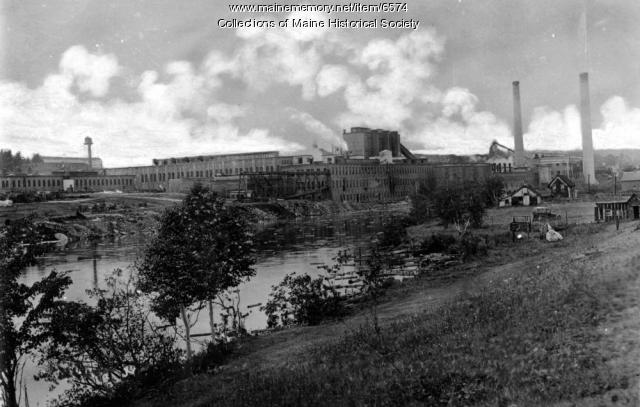
1899 — Great Northern Paper incorporated and construction begins for the mill and the town.
1900 — First roll of newsprint came off the machines in the Millinocket mill.
1900 — Town’s population reaches 2,000.
1901 — Town of Millinocket was incorporated.
1911 — Millinocket’s population reaches 5,000.
1927 — Garret Schenck (founder of GNP) dies
1942 — GNP’s timberland holdings peak at just over 2 million acres.
1954 — A new steam plant was built and started up
1960’s into the 70s — GNP employment peaks at about 4,400 people.
1961 — A large pipeline was installed between Millinocket and East Millinocket to carry slush sulfite pulp for paper machine operation at the East mill at a cost of approximately 2 Million.
1970 — GNP merges with Nekoosa-Edwards Paper Company to become Great Northern Nekoosa.
1971 — Log driving on the Penobscot River comes to an end and Golden Road construction begins.
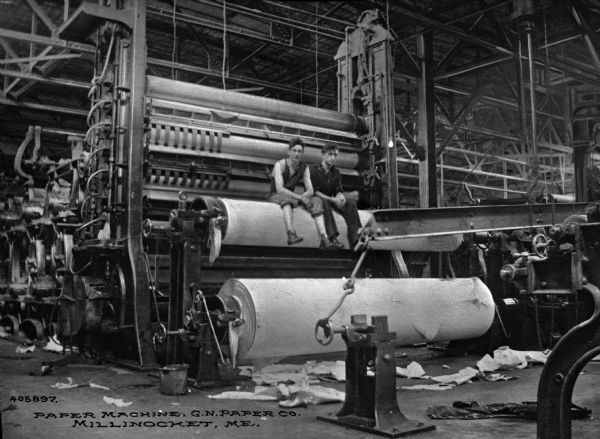
1972 — A $50 million modernization of the Millinocket mill which included the installation of the No. 11 paper machine.
1986 — First round of layoffs begins: GNP announces plans to eliminate 1,200 to 1,400 workers.
1989 — Georgia Pacific purchases GNP in a hostile corporate takeover.
1991 — Georgia Pacific’s holdings sold to Bowater.
1999 — Inexcon purchases Bowater holdings and files bankruptcy in 2002.
2002 — Hydro system sold to Brascan Corp. and renamed Great Northern Energy.
2003 — Brascan Corporation purchases Bowater holdings (operating under the name Katahdin Paper Company LLC) and files for bankruptcy the same year.
2003 — Brookfield Asset Management purchases Katahdin Paper Company
2008 — Millinocket mill closes permanently.
2011 — Cate Street Purchases Katahdin Paper Company holdings, renames holdings “Great Northern Paper” No longer managed by Twin River Paper Co.
2013 — Millinocket mill remains shut down and demolition of buildings is proceeding.
2014 — Millinocket mill smokestacks are demolished.
2017 — Our Katahdin, a non-profit 501-c3 purchases Cate Street Capital holdings in Millinocket.
2022 — One North Maine, LLC, a subsidiary of Our Katahdin, incorporates to develop and operate the former mill site.
2022 – Katahdin Salmon executes a lease option to develop a land based R.A.S. Aquaculture System.
History of Millinocket
Millinocket is a Native American word (Abenaki) that means “the land of many islands”. For 10,000 years Millinocket was inhabited solely by Native Americans. Thomas Fowler arrived in 1829. He was the first settler of what would eventually become Millinocket. He worked with his family to clear land, build a log cabin, and start a farm on the West Branch of the Penobscot River at the head of Shad Pond. By 1837 several families had also built cabins there. Thomas Fowler and his son, Thomas Fowler Jr. were hired by author Henry David Thoreau in 1846 to be guides on a trip to Mt. Katahdin. Later Thoreau would write about the area in his book titled, “The Maine Woods”.
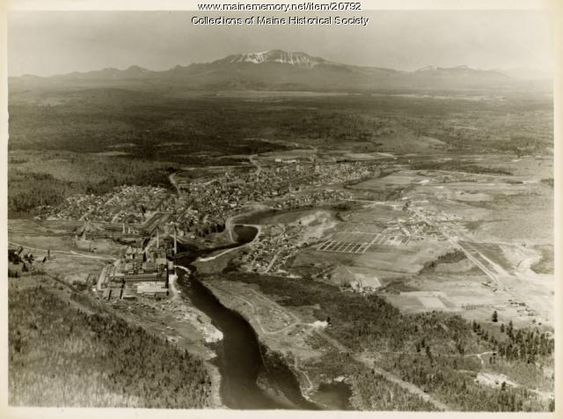
The area began to grow in 1894 when the Bangor and Aroostook Railroad finished its line to Houlton providing rail service to the area. Millinocket’s remote forest location made the town an ideal place for the Great Northern Paper Company to locate their mill. Construction began in 1899. The mill was built by hundreds of Italian immigrant stonemasons and laborers. Of Millinocket’s 1,002 residents in 1900, 432 were natives of Italy. Immigrants from Poland, Finland, Lithuania, and Hungary also arrived to work as laborers to complete the mill. French Canadians came from along Maine’s northern border with Canada, and from the St. John Valley, to work in the woods, as well as the mill. Soon people were pouring in from all over the globe to build the town and to work at the mill.
The region grew so quickly that the small township was dubbed “The Magic City” because it grew so fast – in the wilderness. Great Northern Paper Company grew to be the largest mill in the world. Harnessing the water of the West Branch of the Penobscot River, power was generated to drive the mill and turn out paper which was exported throughout the world. The mill operated 24 hours a day seven days a week, churning out newsprint at the rate of 240 tons per day.
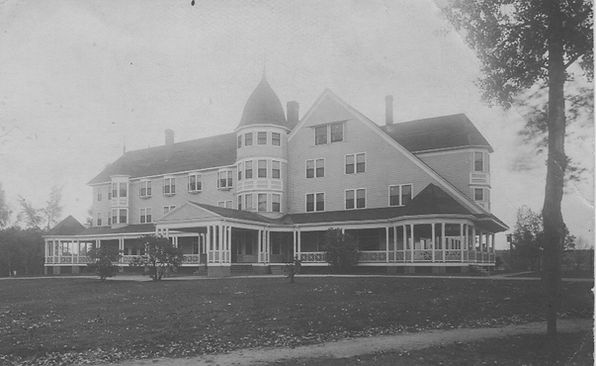
Throughout the 20th century, the community prospered. Millinocket citizens formed different organizations to provide structure and entertainment for the town. The Great Northern Hotel and the Millinocket Opera House were two notable locations for performances. The citizens had sports teams and a community band. Millinocket even had a golf course. Millinocket kept growing.
The town was very self-sufficient. It is said that during the Great Depression no one at the mill lost their jobs. Although the workers reduced their hours to keep everyone working, they were all able to support their families during that bleak period in American history. After WWII there was a housing boom and in the early 50’s Millinocket built a hospital and a community swimming pool. There was a time when a young man could graduate Stearns High School and start work at Great Northern Paper the very next day. The town had the highest manufacturing wages in the state. In 1973, average annual gross manufacturing wages in Millinocket were $11,951 (roughly $64,000 in today’s dollars) compared to a state average of $7,050 (nearly $38,000 in today’s dollars), according to the Census of Maine Manufacturers.
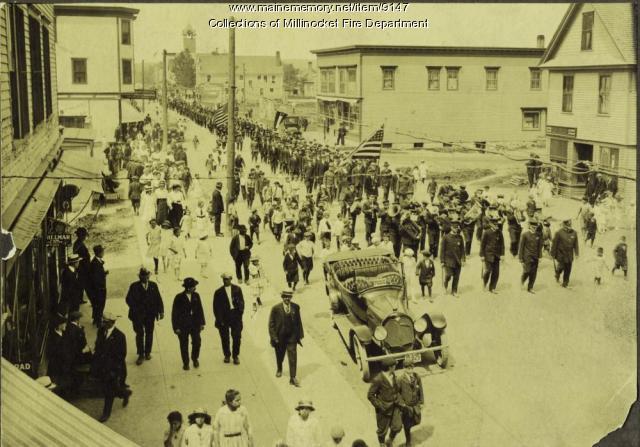
Millinocket’s population peaked at more than 7,700 residents in the 1960s and 1970s. The Millinocket and East Millinocket millsproduced newsprint for some of the largest newspapers on the East Coast, including The New York Times. It produced paper for phone books and catalogs. The town’s people sometimes remarked that most of the people on the East Coast have held Millinocket-made paper in their hands at one time or another. Great Northern Paper was taken over by Georgia Pacific in 1989 and then the mill switched hands again in 1999 to Inexcon, a Canadian company. They were acquired by Brascan Corporation (presently Brookfield Asset Management) in April 2003 and operated under the name of Katahdin Paper Company LLC until private equity group, Cate Street Capital acquired the Millinocket and East Millinocket mills in 2011 from Brookfield resuming operations as Great Northern Paper Company. Cate Street Capital did not resume operations of the Millinocket mill – instead exploring operations on development of a torrefied wood production facility and demolishing former mill assets. Our Katahdin acquired the Millinocket mill assets on January 12, 2017.
